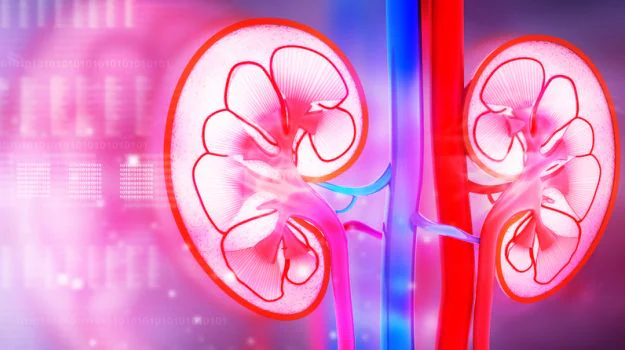When your child is diagnosed with a rare kidney condition, it can feel overwhelming. You’re flooded with questions, fears, and the urgent need to understand what’s happening and why. Two conditions that often cause concern in pediatric and adult kidney health are Infantile Nephrotic Syndrome and Kidney Membranous Nephropathy. While they affect different age groups and have distinct characteristics, they both involve damage to the kidneys’ vital filtering units: the glomeruli.
At NephCure, we’re here to break down the science in a way that’s easy to understand and provide families with the knowledge and support they need.
What is Nephrotic Syndrome?
Nephrotic Syndrome is not a single disease, but a collection of symptoms that result from damage to the glomeruli, those tiny filtering units inside the kidneys.
Key symptoms include:
-
Proteinuria (high levels of protein in the urine)
-
Hypoalbuminemia (low levels of protein in the blood)
-
Edema (swelling, especially in the face, abdomen, and legs)
-
High cholesterol
When this condition occurs in infants, especially within the first year of life, it’s known as Infantile Nephrotic Syndrome, and its causes can differ significantly from adult cases.
Infantile Nephrotic Syndrome Causes: What Parents Should Know
Infantile Nephrotic Syndrome Causes is a rare but serious condition, often diagnosed within the first three months of life. Understanding the causes can help guide treatment options and long-term care plans.
Common Causes of Infantile Nephrotic Syndrome:
-
Genetic Mutations:
-
Many cases are inherited and result from mutations in genes responsible for the structure and function of the kidney's filtering units.
-
The most common genes involved include NPHS1, NPHS2, and WT1.
-
Genetic testing is often used to confirm diagnosis and tailor treatment plans.
-
-
Congenital Infections:
-
In rare cases, infections such as syphilis, toxoplasmosis, or cytomegalovirus acquired before birth can trigger nephrotic syndrome.
-
-
Structural Abnormalities:
-
Some infants may be born with developmental defects in kidney structure, which affect normal function and lead to protein leakage.
-
-
Immune Dysregulation:
-
Although less common in infants, immune-related damage can still play a role in the syndrome's onset.
-
Signs to Watch for in Infants:
-
Swelling in the belly or eyelids
-
Poor feeding or weight gain
-
Foamy urine (due to protein)
-
Frequent infections or fatigue
If you suspect any of these symptoms, seek medical evaluation right away. Early diagnosis and supportive care can make a significant difference.
What is Kidney Membranous Nephropathy?
Unlike Infantile Nephrotic Syndrome, Kidney Membranous Nephropathy typically affects adults, although it can occasionally appear in children. It’s one of the most common causes of nephrotic syndrome in adults and involves thickening of the glomerular basement membrane due to immune complex deposits.
Causes of Kidney Membranous Nephropathy:
-
Primary Membranous Nephropathy (PMN):
-
This occurs without any associated illness.
-
It’s often linked to autoantibodies against a protein called PLA2R on kidney cells.
-
-
Secondary Membranous Nephropathy:
-
Caused by underlying conditions such as:
-
Lupus
-
Hepatitis B or C
-
Certain cancers
-
Medications (e.g., NSAIDs or gold therapy)
-
-
Membranous nephropathy is generally slow-progressing, and in some cases, remission occurs without aggressive treatment. However, regular monitoring is crucial.
Comparing the Two Conditions
While Infantile Nephrotic Syndrome and Kidney Membranous Nephropathy are distinct, they share a few important features:
| Feature | Infantile Nephrotic Syndrome | Kidney Membranous Nephropathy |
|---|---|---|
| Typical Age of Onset | Birth to 1 year | 30–60 years (mostly adults) |
| Primary Cause | Genetic mutations | Autoimmune or secondary diseases |
| Treatment Approach | Supportive care, transplant may be needed | Immunosuppressive therapy, lifestyle changes |
| Long-Term Outlook | Often progressive, high-risk | Variable some recover, others progress |
How NephCure Supports Families and Patients
At NephCure, we’re not just focused on research; we’re dedicated to being a trusted resource for patients and families affected by rare kidney diseases.
Here’s how we help:
-
Education: We break down complex conditions like Infantile Nephrotic Syndrome and Kidney Membranous Nephropathy into digestible, helpful information.
-
Research Funding: We support cutting-edge studies that investigate causes, treatments, and potential cures.
-
Community Connection: We provide opportunities to connect with others who understand what you're going through.
-
Advocacy: We fight for patient-centered policies and expanded access to life-saving treatments.
What You Can Do Next
If you or a loved one has been diagnosed with one of these conditions, here are a few steps you can take:
-
Ask about genetic testing for infantile cases, which helps clarify diagnosis and inform treatment.
-
Stay informed about the latest research into membranous nephropathy, especially related to immune therapies.
-
Get involved with NephCure’s events, webinars, and fundraising efforts to help accelerate progress.
-
Connect with a specialist; working with a nephrologist experienced in rare kidney diseases is essential.
Final Thoughts
Both Infantile Nephrotic Syndrome and Kidney Membranous Nephropathy can have life-altering effects, but understanding their causes, symptoms, and treatment options can empower you to take the next steps with confidence. At NephCure, we’re here every step of the way with compassion, research, and hope.



